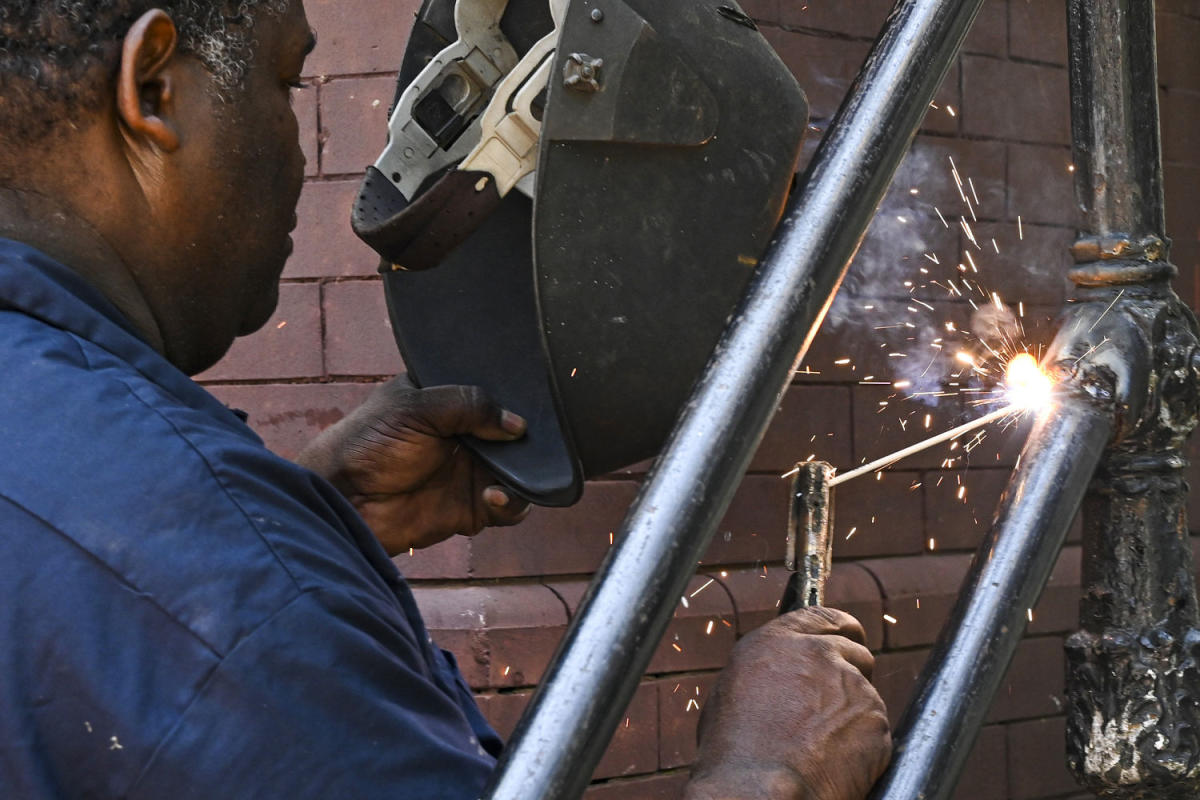California is poised to adopt its first state rules to protect indoor workers from extreme heat — a policy that could be implemented later this summer.
A standards board of the California Division of Occupational Safety and Health (Cal/OSHA) voted unanimously Thursday to approve the new workplace rules. That sends them on to the state Administrative Law Office for what is expected to be an expedited final approval, meaning the standards could go into effect in early August.
The heat rule was initially scheduled to be introduced in 2019, but was delayed by five years. If it becomes law, the policy will protect about 1.4 million warehouse workers, restaurant workers, people with manufacturing jobs and others who work indoors from dangerously hot working conditions.
The regulations require employers to monitor workers for heat-related illnesses and provide them with water, breaks and cooling areas when indoor temperatures reach 82 degrees Fahrenheit. If conditions reach 87 degrees, employers will need to take further action, such as implementing more frequent breaks, adjusting schedules, slowing the pace of work or providing cooling equipment.
Once these rules take effect, California will join Oregon and Minnesota as the only states with policies that protect indoor workers from heat exposure. California adopted heat standards for outdoor workers in 2006, including agricultural and construction workers.
Meanwhile, recent state laws in Texas and Florida have eroded workplace protections against extreme heat by prohibiting cities and counties from enacting local regulations to protect outdoor workers, such as requirements for mandatory water breaks or time in the shade.
Labor advocacy groups have pushed nationally for workplace heat standards for indoor and outdoor workers, but the federal Occupational Health and Safety Administration has not yet adopted such rules.
Advocates say regulations like California’s are needed more urgently than ever as climate change makes heat waves more frequent and intense.
“This is a huge thing,” said AnaStacia Nicol Wright, policy manager at WorkSafe, a nonprofit employee advocacy group based in Oakland, California. “Workers need this protection as soon as possible.”
However, the state’s new requirements won’t protect all indoor workers there: Officers from state and local correctional facilities, as well as other prison staff, are excluded for now. In March, Gov. Gavin Newsom’s administration challenged how much it would cost to bring California’s Department of Corrections and Rehabilitation into compliance, so the standards were adjusted to shape the state’s prison system.
Some worker advocacy groups believe the temperature thresholds set in California’s policy are still too high.
“The risk of heat illness is a function of both temperature and humidity, but also a lot of physical exertion,” says Tim Shadix, legal director of the Warehouse Worker Resource Center, an advocacy group based in Ontario, California. “If you’re a warehouse worker lifting heavy boxes in an 8- or 10-hour shift, there can be a risk of heat illness even in the 70s.”
Shadix added that he hopes California’s regulations will prompt other parts of the country to adopt similar rules.
“The problem is only going to get worse as climate change increases our summer temperatures. So it is very important to see progress and have more models to inspire other states to follow suit,” he said. “And I think it builds momentum at the federal level, which is what we really need, because we need to make sure that workers across the country are protected.”
Heat kills more people in the United States each year than any other extreme weather event. According to the U.S. Bureau of Labor Statistics, there were 43 recorded workplace deaths due to environmental heat exposure in 2022, compared to 36 in 2021.
Robert Moutrie, a senior policy attorney at the California Chamber of Commerce, said employers are “switching into compliance mode,” but added that certain industries, such as restaurants, will bear a heavy burden because kitchens are inherently warm, confined spaces.
Moutrie also said that small businesses in particular have expressed concerns about how best to implement the rules when they come into effect in a few months.
“That’s not a lot of time to change your internal practices, train your staff and talk to your lawyers about it,” he said. “All those things take time and resources.”
As for workers in California prisons, Cal/OSHA said in a statement that it plans to “continue to propose industry-specific regulations for local and state prisons, taking into account the unique operational realities of these workplaces.” However, a specific timeline was not given.
Wright expressed disappointment in the tens of thousands of prison workers excluded from the regulations.
“It’s a huge part of the workforce,” she says. “But heat is a problem for workers and non-workers. Many prisons do not have central air conditioning, so forcing them to do certain things to ensure temperatures are safe for prison workers would also benefit inmates.”
This article was originally published on NBCNews.com
